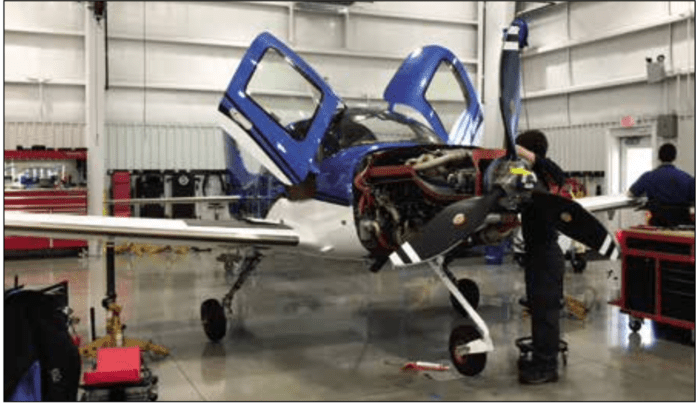At press time, the service bulletin that grounded a chunk of new Cirrus SR22s progressed to an expected FAA AD (2023-04-08). Continental already has a means for compliance, with tech data in Continental’s Mandatory Service Bulletin MSB23-01.
Cirrus voluntarily grounded some of its Continental-equipped low-time SR models even before the engine maker announced that the crankshaft problem affects roughly 2000 crankshaft assemblies. The service bulletin/AD addresses the crankshafts in new engines and crankshaft assemblies sold as replacement parts. This was on engines and cranks manufactured between June 21, 2021, and Feb. 7, 2023.
The problem is that one or more retaining snap rings were improperly installed so that the rings weren’t correctly seated in the crankshaft counterweight groove. The counterbalance weights are intended to suppress torsional loads on the crankshaft. The weights, which move on pins in response to changes in RPM, are held in place by the snap rings. Installed incorrectly, the counterweights can depart from the crankshaft (and in some engines they have), resulting in catastrophic engine damage and stoppage.
LESS THAN 200 HOURS
That’s the magic number in engine operating time because presumably if the crankshaft hasn’t failed in that amount of time, it won’t. For engines over 200 hours, no action is required. But for many others, including some TIO/IO-360, IO/O-470, TSIO/IO-520 and TSIO/IO-550 engines (the service bulletin lists them by serial and exact model numbers), there’s some work to do.
The first step is inspecting the engine data plate, located on the 1-3-5 side of the engine, and compare the serial number with the ones listed in the bulletin. Locate the crankshaft serial number that’s stamped in the area of the prop flange.
The inspection obviously takes longer for crankshafts already installed on an engine. That requires removing the cylinders from the odd side of the crankcase. The number of cylinders required to be removed for inspection is determined by the number of and location of the counterweights on the crankshaft assembly. Crankshaft assemblies differ by engine model, of course.
After pulling the cylinders, step two in the bulletin calls for rotating the crankshaft to gain access to the counterweight plates. Use a flashlight and an inspection mirror to check the proper installation of the retaining clip in the counterweight grove. The bulletin shows good images of what you’re looking for, but the inspection could turn complicated.
If all the components appear to be installed, but the counterweight retaining snap ring does not appear to be in the proper orientation or the minimum distance between the retaining ring ears is not met, the bulletin says to attempt to reposition or reseat the retaining ring with retaining ring pliers or a small drift or punch. But if it’s found that a counterweight retaining snap ring, plate or pin is missing, the next step is to pull the entire engine for disassembly and inspection.
The crank inspection calls for measuring the retaining snap ring’s gapping spec. Continental says it will loan out inspection gauges, and the bulletin also offers the specs for those who want to have a gauge manufactured on their own.
The mandatory service bulletin is on Continental’s dime. For inspections of crankshafts not installed on an engine, the company will pay 0.15 hours of labor (at posted shop labor rates) and 0.25 to reposition, reseat or remove and properly install the counterweight assemblies.
For on-engine cranks, it’ll pay 10 hours to remove and reinstall one cylinder, 18 hours for two cylinders and 22 hours for three cylinders, in addition to 0.25 hours for the inspection and 0.50 hours to properly configure the counterweight arrangement.
The company has also set up a dedicated support phone number (251-441-4460) and email address ([email protected]) to field questions about the inspection.
If you have an engine or crankshaft that’s affected, let us know how the work was handled.


